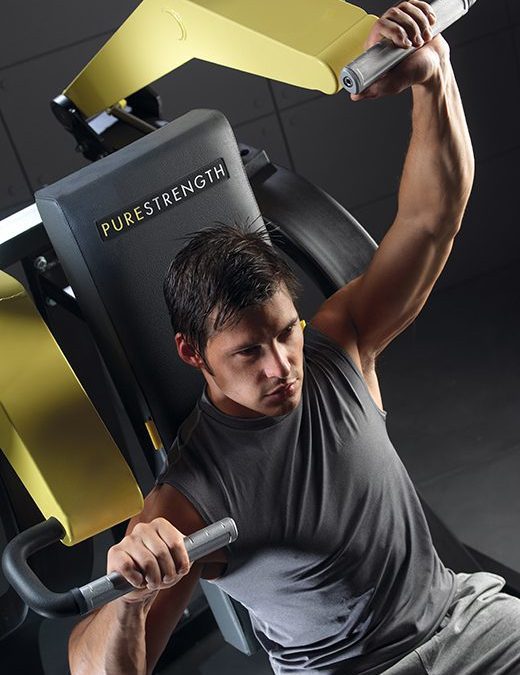I need a bigger basement.
I’ve been lifting heavy stuff for almost a quarter century. Until about five years ago, when I made the transition to home gym, I regularly incorporated the use of weightlifting machines into my regimen. Yes, it was mostly free weights, but around 30% of my lifting time was machine-based.
When I went home gym, I only had enough room for one or the other due to both space and cost. I chose free weights, but I miss those machines. And after conducting interviews for this article, I miss them even more.
If you have a gym membership with fancy weightlifting machines you should not be disrespecting such equipment, you should be using it.
But when it comes to the weightlifting machines, some don’t respect them. “Don’t use the machines. Just stick with free weights.” I’ve heard it so many times, and it’s dumb.
“The statement that machines are useless is just a silly comment. It’s inane, and lacks appreciation for the complexity of the adaptive responses to exercise,” Brad Schoenfeld, assistant professor of exercise science at Lehman College in New York and author of The M.A.X. Muscle Plan told me.
Some are anti-machine because they question the functional aspect.
“Machines can promote functional improvements, and this has been displayed over and over in multiple studies,” Schoenfeld said. One example he gave was of a group of 90-year olds who did three days a week on the often maligned leg extension. But the study revealed major strength increases, and two of the ten participants ended up being able to walk without their canes as result of this one machine exercise. How is that not functional?
But you’re not looking to ditch your walking stick. You want strength and size.
“The machines provide a stimulus that can be synergistic with free weights to maximize hypertrophy,” Schoenfeld told me. “This is not a binary decision.”
“This is not either or,” echoed Nick Tumminello, a trainer of trainers and author of Building Muscle and Performance. “Do both. Machines vs. free weights is a silly argument. It’s like arguing whether you should eat vegetables vs. fruits.” Tumminello said adding machines could also improve overall functional ability, over and above the use of free weights.
He also explained a muscle mass benefit of machines by getting me to think of a biceps curl.
“Free weights are enhanced gravity, and gravity has a single force vector, which is vertical, up and down,” he said. “Machines work on a cam system so do not have a single force vector and keep a more consistent resistance through the range of motion.” At the top range of a dumbbell biceps curl you have minimal resistance because you’re moving the weight almost parallel to gravity, but with a machine, the resistance is consistent. Ergo: bigger gun show for you.
But it goes beyond that.
“From a hypertrophy standpoint, the benefits of machines counteract the disadvantages of free weights, and vice versa,” Schoenfeld said. “By taking out the need for muscle stabilizers in free weight exercises you can more focus on a given aspect of a muscle and enhance the hypertrophic response.” Muscle fibers go boom.
In relation to whether to use machines or not, Tumminello said, “Whatever your goals are, you need to look at what principals to adhere to in order to achieve these goals. Machines can make achieving certain goals more convenient.” As an example, you can lean over while progressing through a biceps curl to keep gravitational force on the muscle, or you can use a machine. The latter seems more convenient.
But machine use goes beyond the goals of ambitious lifters. They open up the gym to users of myriad ability.
“Their benefits, when compared with traditional free weights are those of providing a guided trajectory, thus being far more easy to use.” This is from Silvano Zanuso, head of the scientific department for TechnoGym. “Additionally, having a fixed trajectory they are safer.” Some people just don’t feel capable or comfortable with free weights, and machines offer a good workout that is easier and reduces risk of injury.
Such machines also play an important role in the rehab and testing process.
“Often, people in rehab have a limited range of motion,” Zanuso said. “With a selectorized strength machine it is possible to control this range: by means of pre-start lever to avoid excessive strain at the beginning of the movement … or by limiting the flexion or extension movement.” High-tech weightlifting machines are a popular sight in many high performance and sport rehabilitation facilities.
Who knows? Perhaps my next book will be a mega bestseller and we’ll move into a house with a giant walkout basement. Filling it with weight machines would be a fun shopping trip.
Follow James on Facebook and Twitter.
James S. Fell, MBA, writes for the Los Angeles Times, Chicago Tribune, Women’s Health, Men’s Health, AskMen, the Guardian, TIME Magazine and many other fine publications. His first book was published by Random House Canada in 2014. He is currently working on his next book, which is about life-changing moments.

